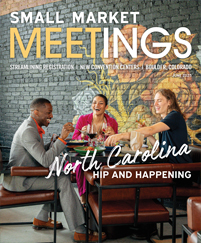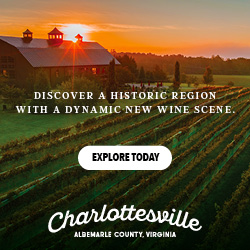Remember your school days? Didn’t American history feel a little flat coming from a textbook, even one with maps and illustrations? But board a bright yellow bus and head to the nearest historic site, and suddenly, history got three-dimensional and a lot more interesting.
Meeting planners can leverage the power of historic places to make their events more memorable. Events akin to school field trips can add new dimensions to meetings and conferences, especially when a city’s own history plays a big role in the history of the nation as a whole.
If you’d like to plan a meeting in a city where people can think deeper about important moments in U.S. history, here are five to consider.
The fight for Civil Rights
Birmingham, Alabama
Birmingham does not back away from talking about the painful role it played in the Civil Rights Movement. The Birmingham Civil Rights Institute reminds visitors of how peaceful protestors at a nearby park were met with firehoses and snarling police dogs. The 16th Avenue Baptist Church memorializes young girls killed in a bombing by white supremacists. The fight for equality is examined in tours and historic sites and shows how Alabama’s largest city was changed in positive ways as fair-minded people banded together for a better future. Today’s Birmingham is a cosmopolitan charmer, with a convention center complex and attached 700-plus room hotel, boutique downtown properties, barbecue joints, James Beard award-winning chefs and diverse leaders and business owners. It’s a city that seems to open its doors to all, as it reminds how far it — and the country — have come.
Lincoln’s lessons in leadership
Springfield, Illinois
If you want to learn about Abraham Lincoln without reading the more than 15,000 books already written about him, Springfield is the place. Not only is it the capital of Illinois, but it’s also the capital of all things Lincoln. Groups can visit sites such as the Abraham Lincoln Presidential Museum, with its high tech exhibits and interactive displays; New Salem, a reconstruction of the village where Lincoln grew up and worked; the Lincoln home, where he and his young family lived; and the Old State Capitol, where he argued cases and later declared, “A house divided against itself cannot stand.” Springfield is also the site of Lincoln’s tomb, where visitors often rub the nose of his bronze bust for good luck. A conference in Springfield can leverage Lincoln’s story to teach lessons about leading in the face of extreme adversity and division. As the seat of state government, Springfield was a meeting place decades before Lincoln’s day, and today, its downtown has more than 800 hotel guest rooms, including two operated by major chains, near its BOS Center.
Live like a colonist
Williamsburg, Virginia
Williamsburg is a thoroughly modern city wrapped around the incredibly preserved and reconstructed Colonial village, Colonial Williamsburg. A visit to what is the world’s largest living history museum is the closest one can come to feeling like a colonist, and the experience is so authentic visitors will want to start working at a loom or marching in the fife and drum corps. Guests can stay in historic homes throughout the village, and Colonial Williamsburg also has a collection of four hotels, including an early-1900s inn, as well as varied meeting spaces, a spa, two golf courses and other resort-style amenities. There’s dining in both contemporary restaurants and historic taverns, including Christiana Campbell’s, where George Washington would recognize the tasty seafood because he often ate there. Groups can tour and enjoy Colonial Williamsburg without staying there, of course, and nearby resorts like Kingsmill and Great Wolf Lodge Williamsburg might be better fits for some conferences.
Study Black history where the Civil War began
Charleston, South Carolina
No blood was shed during the battle at Fort Sumter in Charleston Harbor on April 12, 1861, but it did launch the Civil War, the most deadly conflict ever waged on American soil.
Today, those turbulent times can seem far away, but wander narrow shaded streets, past historic homes and enviable gardens, and you’ll find reminders of the enslaved people whose freedom was gained by the war. Excursions like those offered by Frankly Charleston Black History Tours delve deeper into Black history. A special tour at Middleton Place plantation details the lives of slaves who labored there.
Charleston today has a wealth of Black-owned businesses, all listed in the Black Charleston Guide available from the CVB. Many are businesses that meeting planners need, like venues, restaurants, caterers, meeting planners and transportation companies.
Downtown Charleston is packed with inns and hotels, often housed in historic structures. In North Charleston, the city’s convention center has some 2,000 hotel rooms nearby.
Cultures converge in the high desert
Santa Fe, New Mexico
When many cultures converged over time in the high desert of New Mexico — the Pueblo nations, the Spanish, Mexicans, French traders, American pioneers — a colorful and creative city was born.
Santa Fe was founded in 1610 and is the oldest capital in the United States. Its charming tangle of streets, multitude of museums, abundant art and historic plaza remind visitors that blending cultures brings beauty and creative excitement. Thanks to zoning and other protections, most hotels, even new ones, look like the many hotels and inns that actually are old and historic. The Santa Fe region is also tied to another defining moment in American history. Some 40 miles northwest, through scenic desert, Los Alamos National Laboratory, the birthplace of the atomic bomb, sits behind tall fences. At the visitor’s center, the National Park Service shares the story of why the site was chosen for the lab and how the bomb was built.












